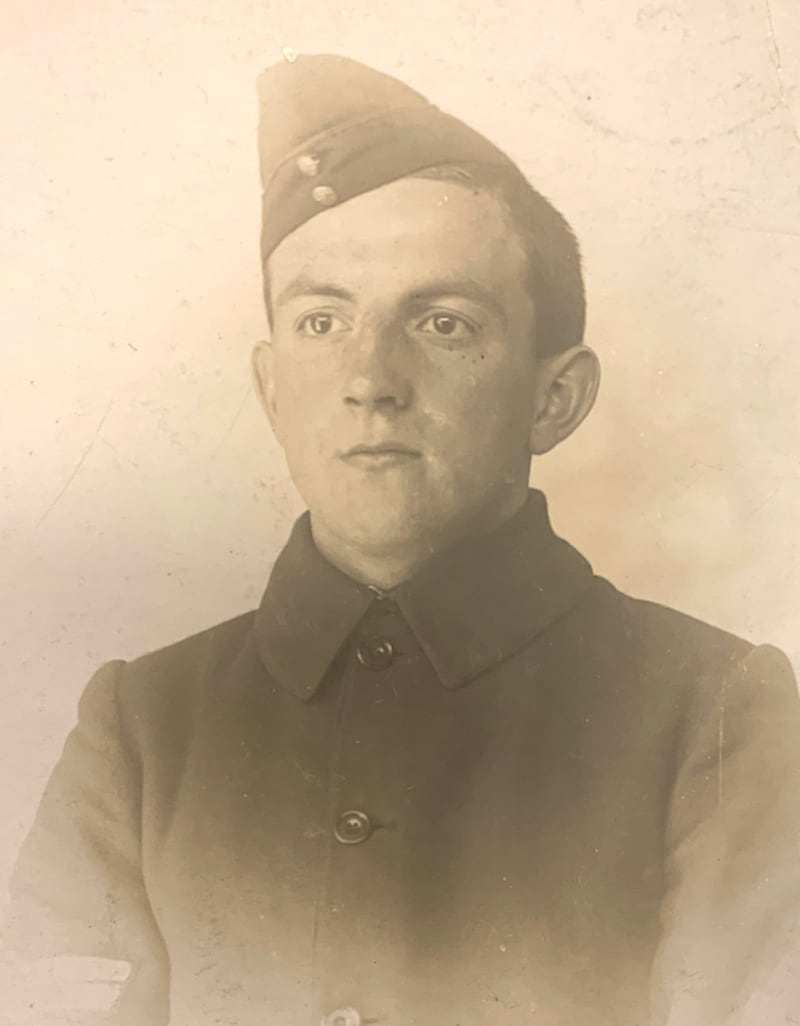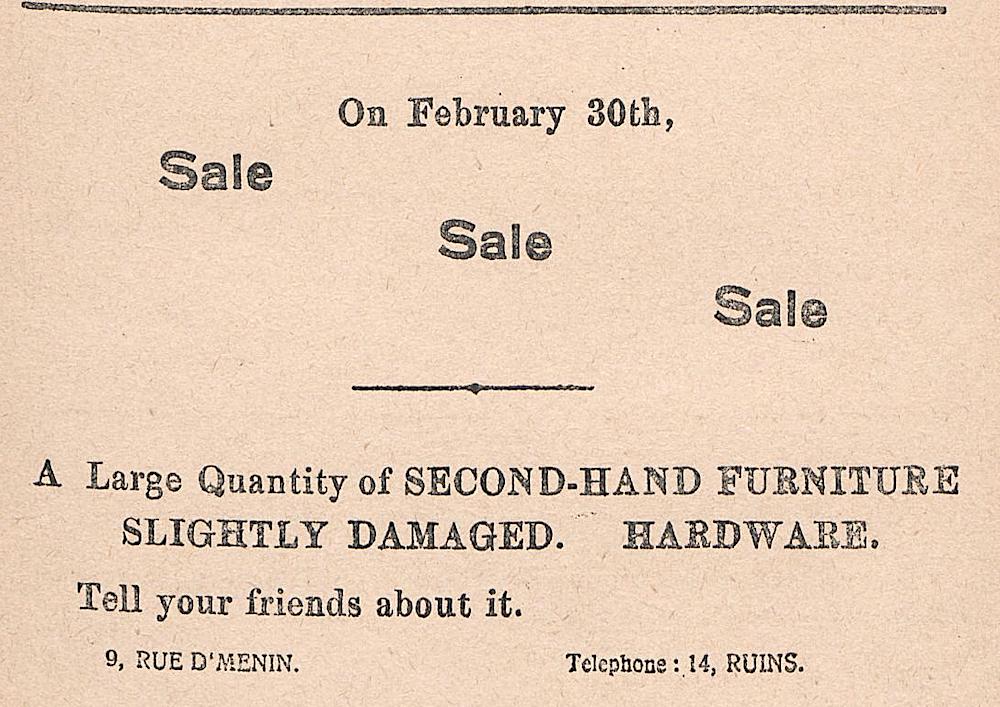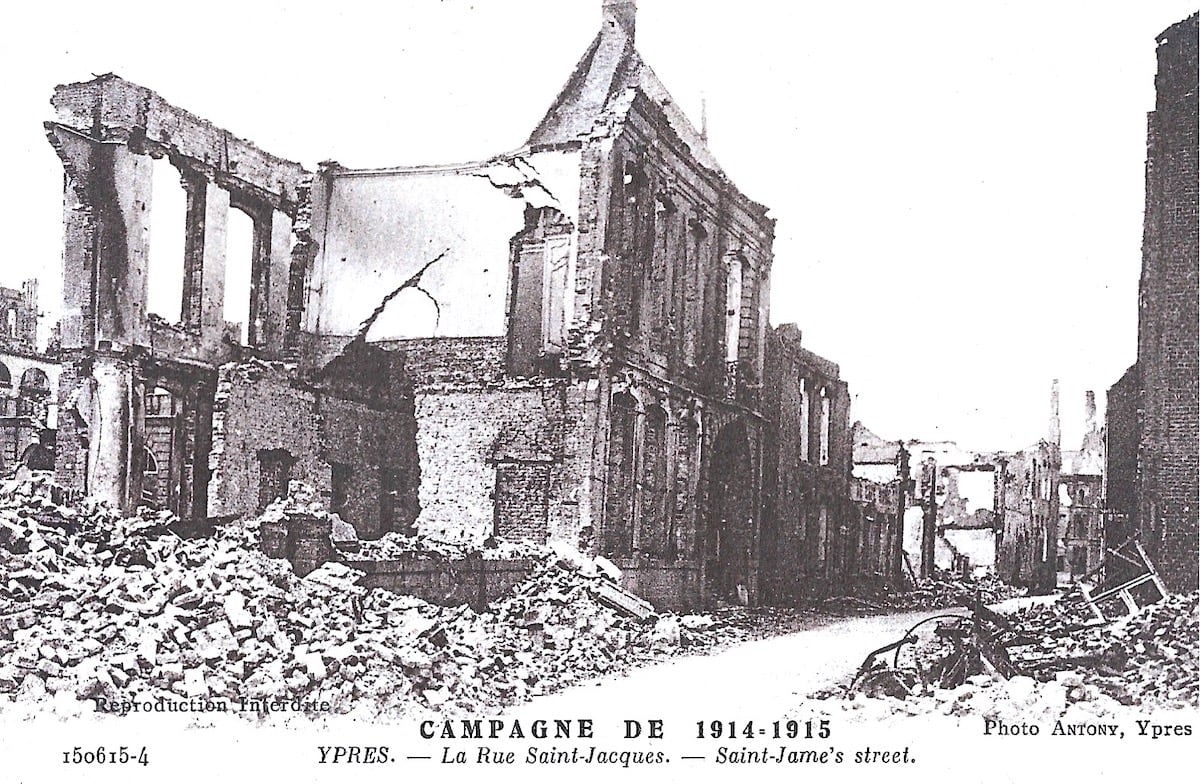The Wipers Times Exposé: The Printer and the Presses
In my post on the Wipers Times Staff, Suspects, and Witnesses, I mentioned that there was ambiguity around who the printer on the paper was. One of the names associated with the role was that of Sergeant Leslie Tyler — found in a letter he sent in 1916 to his local paper. However, research has uncovered that these were more likely the words of an over-enthusiastic 19-year-old.1 The name Sergeant Turner was also mentioned in numerous sources as the printer, but his name had been given both as W. Turner and George Turner.
In August 2023, I headed to the archives of the Museum of the Mercian Regiment, which holds the Sherwood Foresters collection, to see if I could shed any light — and here is what I found out.
The Printer

There is now no doubt that the Turner mentioned in previous sources was Sergeant George Turner, service number 16862, born 27 July 1891 in Shrewsbury, Shropshire. He enlisted into the Sherwood Foresters on 14 September 1914, with his civilian occupation listed as Collier. He was promoted to corporal in October, then sergeant in December of the same year. He served with the Foresters for the duration of the war and was demobilised in January 1919.2
The 1921 census shows him living at 54 St Michaels Street, St Marys, Shropshire — an address he kept for the rest of his life, with his occupation listed as a Fire Hooper for the Great Western Railway. A newspaper obituary from 1966 reveals he spent his entire working life for the railways before retiring at the age of 70. He died, from ill-health, at the age of 75.3
The archives contain a small collection of his personal ephemera which was only donated to the museum in 2019. I found out about these papers shortly before my visit through a highly recommended source on researching First World War soldiers, The Great War Forum.
The collection consists of a small number of postcards, mainly sent in 1916 to Turner's fiancée, Lillian, whom he would marry in February 1918. In addition, printed on the same presses as the Wipers, there is a 1916 Christmas card, and a menu for the Staff Sergeants Dinner. The feast consisted of tomato soup, English beef served with legumes, chips and cauliflower, finished with Christmas pudding, prunes and cream, American cheese and celery. Drinks were English beer, Jamaican Rum, French beer, and cigars and cigarettes (half and half) were on hand.4
There were also some letters from the 1960s. The first of these was from Lieutenant Colonel Morgan writing to Turner from Kenya. As mentioned in Staff and Suspects, Morgan was interviewed alongside Turner in 1964 for a television interview about the Wipers Times. From the letter it appears they were good friends, and Turner had sent copies of the Wipers Times to the BBC but had yet to receive them back.5
The next set of items relates to correspondence with a Dr Alfred Caenepeel, of Ypres. Dr Caenepeel was an expert on the First World War, and his name appears in numerous archives as he corresponded with a great number of veterans of the war (as well as being a veteran himself). He was also one of the founders of the Last Post Committee, and the Flanders Fields Museum, situated in the Cloth Hall, which holds his library of over 1,500 Great War books.6
There are only three letters from Dr Caenepeel (dated 27 November 1964, 19 December 1964, and 29 June 1966) in Turner's papers, but it would appear this is only a fragment of the correspondence between the two.
From the snippets I have seen, Caenepeel's level of research into the Wipers Times puts my own efforts to shame: for example, he researched every company in Ypres which would have had owned a printing press at the time, and marked them onto a map which he then sent to Turner asking which of these locations was where the press was found. This map appeared to go back and forth between the two of them, before ending ultimately in Turner's possession. Along with these letters is what I believe to be a draft of a reply by Turner to Caenepeel's first letter — based on the fact it is not formatted as a letter, and there are many corrections and insertions. The following is based on this draft, Caenepeel's follow up questions, and the map.
The Presses
On the First Press
Turner writes:
How it happened was; I had come down from the front line in the vicinity of what we soldiers called Railway Wood, although there were no trees left when we were there. On the left of the wood, between Hell Fire Corner (truly named) and Hooge (going from Ypres), once the level crossing, and one of our Battalion HQ officers asked me if I could find any men in the company who were printers. As it happened, I had been a printer myself and I also enquired among the lads and there were two compositors in the Company. I went along to the printers works which was in a terrible state but the machine was intact but covered with rubble, and we found a few case of almost intact type, but it was scattered around the workshop covered with rubble. Anyhow, after several days and a lot of perseverance we managed to get in it printing.7
Examination of the unit diary for January and February 1916 shows that the battalion moved from Poperinge to the Ypres ramparts on 6 January 1916, where they worked on cleaning up the camp and improving defences in Ypres, as well as working on trenches to the southeast of Ypres (south of Hooge, and around Zouave Wood). The unit diary explicitly mentions that new work started in Railway Wood on 26 January, which continued for several days — considering the first edition of Wipers was printed on 12 February, this gives a plausible window for Turner's account.8
Turner then goes on to mention that they produced the first two issues of the Wipers in this workshop before 'the Germans strafed production by dropping a shell on the machine'. He describes the machine they found as:
The machine, a single roller machine, {unintelligible}, similar to what we called a Wharfedale, mechanically driven in peace time with quite a large flywheel, but we were able to turn the machine by hand, a rather laborious job but we managed 50 copies of the first issue.9
And while the job was laborious, Turner says they didn't mind because producing the paper 'broke the monotony of boredom'. Boredom is a topic I researched in-depth for my dissertation, and I can't stress the following enough; in the environment that Turner and the others were experiencing, boredom could be just as a dangerous as exhaustion and fear — so good on them!
The location of this workshop has been speculated, by John Ivelaw-Chapman, to be 9 Menenstraat (Rue D'Menin), based on a spoof advert bearing that address which appeared in the first issue of the Wipers.

Chapman further rationalises his assumption by the fact that there had been a printing school at that location — and it is indeed one of the printing machine locations marked on the Turner & Caepeneel map.10 The map, however, has the location of the workshop marked as being Harpestraat, a small side street that runs off Menenstraat and the northwest corner of Sint-Jacobsstraat (the green maker on Figure 2), which again was one of the sites that Caepeneel had identified as having a printing machine.

The second press
After the destruction of the first press, Turner wrote:
Fortunately, we found a small platen machine in a building down a lane, in front of the ramparts, on the Menin Road, between the cemetery on the left and the level crossing. It was a small platen type, easily turned by hand or pedal. We managed to dismantle the machine in daylight and fetched it away after dark on a hand cart but nearly didn't manage it as a German battery started shelling the Menin road just as we offloaded it. Anyhow, after a bit of anxiety we managed to get if safely into the ramparts, where production started again.11
On the Turner & Caepeneel map, the location is marked with a slightly ambiguous cross in a circle with the caption 'No 2 Press found hereabouts' between the roads Gildenstraat and Meenseweg. The cemetery Turner mentions is still there today, off Meenseweg, however, Gildenstraat seems to have run a slightly different route back then to what it does now, and sideroads off both roads have changed. I have thus positioned the marker (orange on Figure 1) between two buildings that are on a series 28 map from 1916, as they are the only two buildings marked, which aligns with as 'good-as-can-be' to Turner's 'hereabouts'.
The ramparts shown with the red marker on Figure 2 is the commonly associated 'editorial sanctuary' of the paper and is where the Kazematten Brewery sits today, and where the next two issues of Wipers were printed.
Turner ends his writing with the statement that these were the only two presses they ever had, and that the second press was destroyed in March 1918 in the vicinity of St Quentin in the Spring Offensive. Which raises the questions: on what, and where, were the last two issues printed? More on that below.
Other Locations
After the two issues were printed in the ramparts, the battalion left Ypres on 23 March 1916, marching southwest to Godewaersvelde, then on to Nieuve Eglise.12 This was when the paper changed its name to the New Church Times, of which there were four issues — the first of many moves and name changes. An article in the 1918 reprint of the BEF Times, aptly titled 'For Future Historians of the War', gives a longer account of the Wipers History, and gives the broad locations of where the paper was printed as:13
- Wipers
- Neuve Eglise
- Kemmel
- Somme
- Vimmy
- Loos
- Fosse10
- Dickebusch
- Roisel
- Ville-Cholles
There is talk in the Caepeneel letters about the exact locations, relevant to Ypres, but without the other half of the conversation it is just speculation — with one possible exception: the Dickebusch location. On the Turner & Caepeneel map there are handwritten additions to the area around Dickebusch, adding Café Belge, a familiar landmark on the Western Front, and to the south a lake, and a YMCA hut on the Dickebusch road. There is an arrow pointing opposite the YMCA hut. As a caveat, it is not clear whether this addition to the map was done by Caepeneel or Turner — and it may very well just be there for reference, if — and it's a big if — the addition of the YMCA hut is significant, then the case for, is as follows; in the 'For The Future Historians' article is the following line: 'However, at last we found a house in decent repair on the Dickebusch road, and commenced operations once more'. Thanks to the research of Dr Katheryn White, who has been mapping the locations of YMCA huts during the war, the exact location of that YMCA hut is known, so I have added it to the map (black marker) — but to reiterate, without Turner's letters to Caepeneel, this might end up being nothing.
The Search Continues
In the search to track down Dorothy Violet Hall, this might be seen as a slight detour, but a takeaway for myself is that it has only been possible to confirm Sergeant George Turner due to material that had only recently come to light — a reminder that history is not always static — and while the trail has gone cold on Dorothy for now, it doesn't mean something won't turn up in the future.
In an earlier draft, I originally signed off with a piece along the lines on how confirming details like this might seem small, but it all comes together to form the bigger story, which makes it easier to separate spin from fact. And while there may still be mysteries around the paper — such as the identity of the final press — I am happy for that to be mystery for another day. However, just as I was about to send it over to my proof-reader, based on Turner's statement about the Press, I thought I would re-read the last two issues of the Wipers (now renamed as the Better Times) in case I had missed anything — and I had — a signpost, a clear one at that — so clear, it has led me to the 1930s, instructed myself to take a left towards the present day, and points towards a shelf reference in the British Library. What I will find — I am not entirely sure — it might be my leg being pulled by the Wipers Staff from beyond the grave, but I intend to find out in September.
Post Scriptum
Having received the draft back from my proof-reader, just as I was getting ready to post the article, I received an email from the Flanders Field Museum. Amazingly, the letters that George Turner sent to Dr Caepeneel still exist and are in their archives. Suffice to say, September is going to be a busy month!
-
See https://robertstjohnsmith.com/post/2023-07-29-the-wipers-times-expos-staff-suspects-and-witnesses/ ↩︎
-
TNA/W0363, War Office: Soldiers' Documents, First World War 'Burnt Documents' (Microfilm copies). ↩︎
-
1921 Census England and Wales; England & Wales Deaths 1837-2007; Museum Mercian Regiment/TURNER.PAPERS/2019-8020. ↩︎
-
MMR/TURNER/2019-8020. ↩︎
-
MMR/TURNER/2019-8020. ↩︎
-
https://www.inflandersfields.be/en/collectie-e, retrieved 22 August 2023. ↩︎
-
MMR/TURNER/2019-8020. ↩︎
-
TNA/W095/2201/1, The War Diary of the 12th Battalion Sherwood Foresters. ↩︎
-
MMR/TURNER/2019-8020. ↩︎
-
J. Ivewlaw-Chapman, The Riddles of Wipers: An Appreciation of the Wipers Times, a Journal of the Trenches (York: Pen & Sword Books, 1997), pp.156-157. ↩︎
-
MMR/TURNER/2019-8020. ↩︎
-
TNA/W095/2201/1, The War Diary of the 12th Battalion Sherwood Foresters. ↩︎
-
The B.E.F. Times: A Facsimile Reprint of the Trench Magazine (London: Herbert Jenkins, 1918); this article does not appear in later facsimile editions, and accompanying it, are articles that were meant to appear in the edition that was being produced when the press was destroyed in 1918. I believe it deserves further attention — one of the things I speculated in the first post in this series, was that the Sixth Division, and those who were involved in the Salient Magazine had crossed paths with those who would go onto produce the Wipers. This article mentions the fact the divisions crossed paths in Poperinghe. ↩︎
Posts in this series
- The Wipers Times Exposé: A Picture of Dorothy Violet Hall emerges
- The Wipers Times Exposé: The Actor, Avesnes, and the Forgotten Evening Edition of the Wipers Times
- The Wipers Times Exposé: The Printer and the Presses
- The Wipers Times Exposé: Staff, Suspects, and Witnesses
- The Wipers Times Exposé Addendum: Conclusive Proof, the Letters of Thomas Moore Emmanuel Ward, and Other Contributors Identified
- The Wipers Times, Tatler, and the Identity of ‘Violet’ from Violet’s Chronicle of Fashion: An Exposé